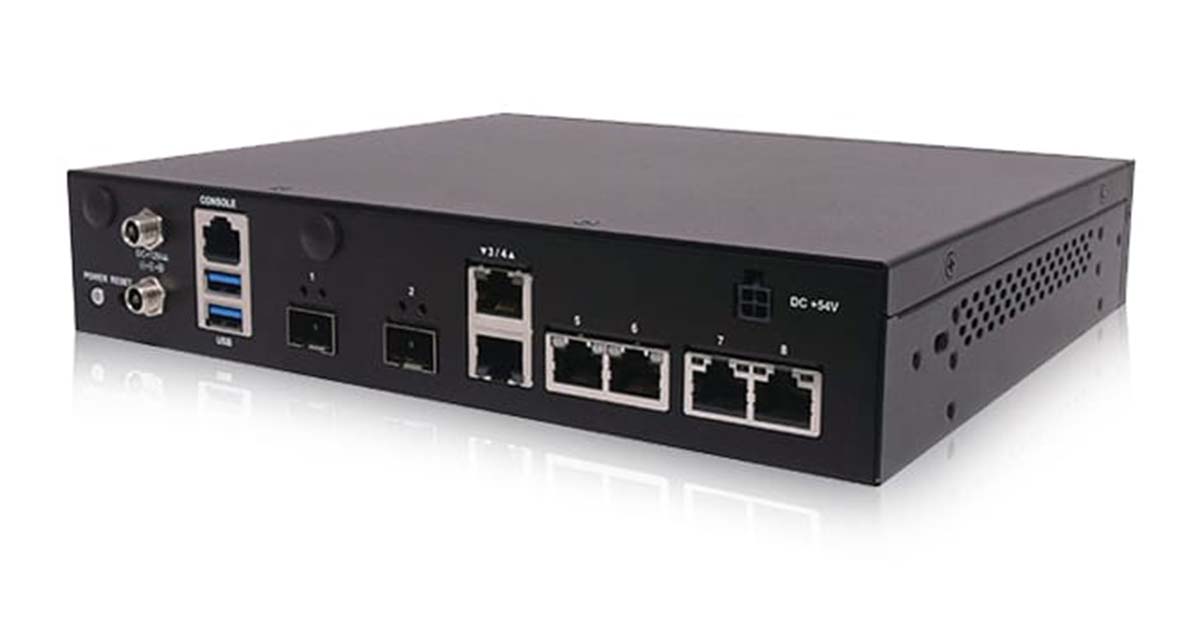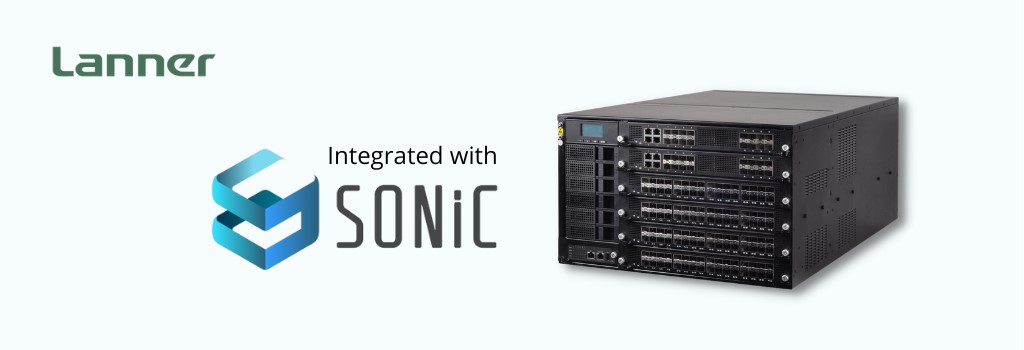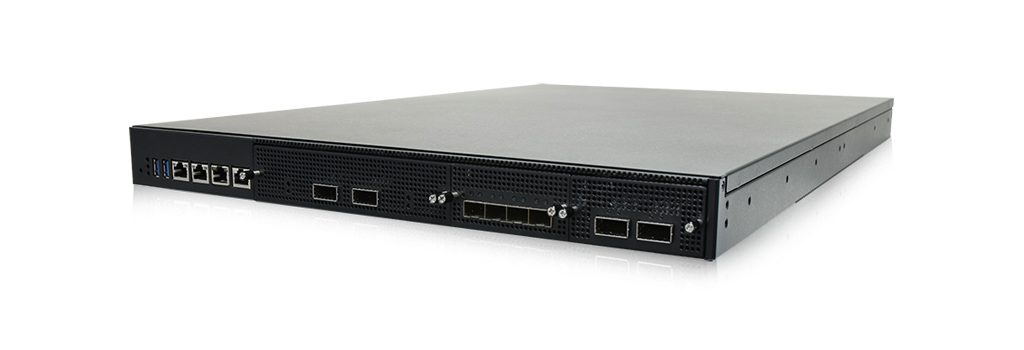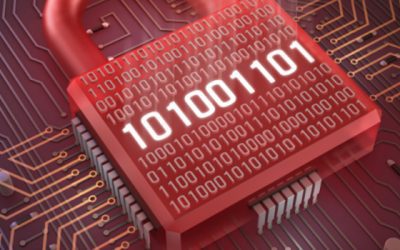5G has facilitated new use cases in both the consumer and industry sector. While traditional cellular technologies like 3G/4G focus on broadband, 5G goes beyond and opens the doors for new services in wireless networks such as latency-critical (uRLLC) and massive-machine-critical (mMTC) based services.
However, there are two challenges here:
The first challenge is the drastic increase in the demand for more bandwidth. For example, high-resolution video, social apps, and new bandwidth-intensive AI/ML (Artificial intelligence/Machine learning) based services are stressing the networks to limits and increasing utilization in cellular networks.
Therefore, as the traffic increases in mobile networks, the telcos want to look for new ways to scale their networks. One desired way is to use the spectrum more efficiently and, in parallel, look for ways to expand the spectrum.
The second challenge is to optimize the network for latency. With the uRLLC services offered by 5G, the operators need to design the network to guarantee low latency.
In fact, telcos question if there is a spectrum available today that is more optimum for high bandwidth/latency than the currently used sub-6 GHz band (also called FR1).
The good news is that 5G mmWave (also called FR2) utilizes a different spectrum than the sub-6 GHz band and can solve both these bandwidth and latency issues in cellular networks.
What is 5G mmWave? what is its spectrum? and what are its benefits and use cases?
This blog answers these questions in an easy-to-follow manner.
What is 5G mmWave? What is its spectrum?
5G mmWave (also called FR2) sits at the higher end of the spectrum, from 24 GHz to 100 GHz, with short wavelengths in the millimeters range and different characteristics than the traditional sub-6 GHz cellular range by providing massive bandwidth with less latency in comparatively shorter distances.
The following diagram shows the frequency ranges of all cellular technologies, including 5G.
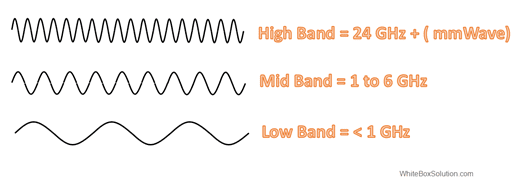 Fig: Range of Cellular frequencies
Fig: Range of Cellular frequencies
- The low band is the traditional cellular frequency spectrum and one of the older ones. One famous band is the 850 Mhz frequency band. The frequency range is less than 1 GHz.
- Mid band includes popular bands like 1800 Mhz, 1900 Mhz, 2.5 GHz, and 3.5 GHz.
- High band includes the mmWaves, also called FR2, and sit in the range greater than 24 GHz.
What are the benefits of 5G mmWave?
Here we compare the 5G Millimeter Wave with different bands based on three factors. Two of them are its strength, and one is its limitation:
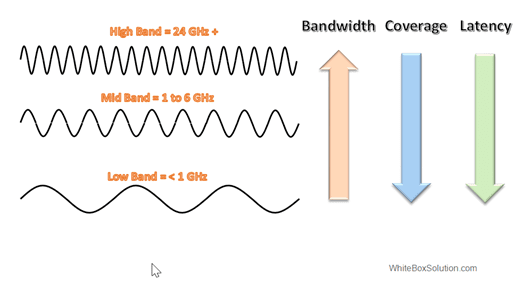 Fig: Better bandwidth and Latency for 5G mmWave
Fig: Better bandwidth and Latency for 5G mmWave
Higher Bandwidth/Capacity
The spectrum above 24 GHz is unused and bigger than sub 6 GHz; this spectrum can range from 24 GHz to 100 GHz. Telco operators can exploit this unused and more enormous spectrum to offer higher bandwidth and capacity. In fact, it can offer 4 to 5 times more speed than traditional 5G bands.
Lower Latency:
This characteristic relates to physics. Lower frequencies suffer more latencies than higher frequencies. So 5G mmWave, which runs at the high end of the frequency range, can offer better latency than sub-6 GHz, which runs in the lower part.
Therefore, 5G mmWave can facilitate a telco that is looking to offer low-latency services.
Limitations/Disadvantages of mmWave:
Less reach of signals.
This characteristic again had to do with physics. The lower the part of the spectrum (that is lower the frequency), the higher the signal’s reach. The lower frequency results in a higher wavelength and a higher wavelength provides more diffraction around the edges so that the signal can reach to higher distance. Therefore, mmWave can reach lower distances than the sub-6 GHz and is more suitable for small cells than large macro cells.
Costly
As signals can reach lower distances, therefore mmWave needs many more base stations to cover the same area as sub-6 GHz.
The mmWave is more directional, which further necessitates using more directional antennas to cover the same area as the sub-6 GHz can cover. This makes the overall solution costlier.
Use Cases and applications of mmWave
mmWave has found use in a lot of applications, such as
Dense Urban and Crowded areas
The mmWave can be used where there is a need to scale the eMBB type of data speed in small and dense areas where it offers more scalability. Crowded malls, stadiums, and large event areas are the most suitable applications for mmWave.
Low latency applications.
Because of the shorter wavelength mmWave that inherently supports low latency, mmWave can facilitate the rollout of 5G for low latency applications, especially for edge applications. From VR/VR to video surveillance, from autonomous driving to online gaming, many use cases can benefit from the low latency offered by mmWave
FWA fixed wireless use cases
As Fixed wireless access (FWA) can be quite demanding in terms of speeds, mmWave can offer a larger spectrum, thus facilitating FWA deployment for business customers and rural areas. Where high-speed internet is needed, and it is desired to deploy broadband quickly and less costly compared to fiber, a mmWave spectrum is a viable option.
FAQ 5G mmWave
- Q) Will 5G mmWave replace conventional 5G that operates in sub-6 GHz?
No, this 5G mmWave is not supposed to replace the Sub 6 GHz. Instead, it will add to the current service provider offering by adding pockets of high-speed eMBB services for densely populated areas and facilitate low latency transport for uRLLC services.
- Q) Where is the best place to start with the deployment of 5G mmWave?
It will depend on each operator’s use case. Most likely, operators will start deploying it to solve the capacity issue in largely congested urban areas.
- Q) Is 5G mmWave better than conventional 5G that operates in the sub-6 GHz range?
5G mmWave is costly and cannot replace the sub 6 GHz at mass scale. The operators will continue to use sub-6 GHz for mass-scale macro deployment while taking advantage of mmWave for specific and niche use cases.
So that’s about an easy-to-understand guide on what-is-5G mmWave, its features, pros/cons, and use cases.
About Lanner’s 5G mmWave ready uCPE Platform
Lanner offers several uCPE models for SD-WAN applications. The NCA-1516 platform has 5G mmWave functionality and WiFI 6 features to ensure a multi-connection with Wi-Fi and cellular networks. It can handle various features, such as
- This device is WiFi 6/5G compatible and has multiple M.2 & Mini-PCIe expansion slots for wireless connectivity with both mmWave and Sub 6 GHz cellular networks.
- Two 10GbE SFP+ uplink ports and dual optional PoE+ are available.
About Lanner/ Whitebox Solutions:
Lanner is a top-tier producer of white box and uCPE platforms for use in SDN, NFV, SD-WAN, Open RAN, and orchestration applications. In the USA, it operates through its subsidiary, Whitebox Solutions (www.whiteboxsolution.com),


